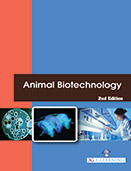Animal and Veterinary Science

As humans became sedentary, they initiated caring for and controlling wild animals and plants for food production, transportation, protection, production of valuable commodities (cotton, silk, or wool), warfare, and companionship. Domesticated animals that we commonly use today, including dogs, cats, sheep, geese, camels, cattle, pigs, and horses started as wild animals but were changed over time through domestication practices. Animal biotechnology encompasses a broad range of techniques for the genetic improvement of domesticated animal species, although the term is increasingly associated with the more controversial technologies of cloning and genetic engineering. The practice of animal biotechnology began more than 8000 years ago when humans began domesticating and selectively breeding animals. The modern era of animal biotechnology arrived following the discovery of the genetic code in the mid 1950s. Today new tools including increased computing power, genomic sequencing, cloning, regenerative medicine and direct gene insertion, and manipulation have given people the potential to dramatically change animals for a wide range of purposes, including food production, medical, and scientific research. Modern biotechnology represents the intersection of man’s manipulation of the environment and the emergence of molecular and computing technologies.
This comprehensive Second Edition of ‘Animal Biotechnology’ focuses on core knowledge in the field of animal biotechnology in a condensed form to students, researchers and faculty. The text aims to highlight that Livestock are part of a fragile ecosystem and a rich source of animal biodiversity, as local species and breeds possess genes and traits of excellence. Molecular markers are increasingly being used to identify and select the particular genes that lead to these desirable traits and it is now possible to select superior germ plasm and disseminate it using artificial insemination, embryo transfer and other assisted reproductive technologies. These technologies have been used in the genetic improvement of livestock, particularly in cattle and buffaloes, and the economic returns are significant. This handy Edition will be important to everyone interested in the implications of the use of animal biotechnology.